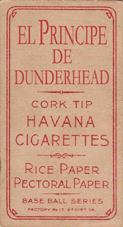How to detect rebuilt corners by Kevin Saucier
Page 1 of 1
 How to detect rebuilt corners by Kevin Saucier
How to detect rebuilt corners by Kevin Saucier
All of these posts about detecting alterations are reposted with permission from Kevin Saucier.
This is a good example of why every collector should have at least
a halogen light, a 10X loupe as well as a black light as part of their
collection. It also should be a good reason for PSA (and others?) to
stop admittedly just eyeballing cards and actually use instruments for
alteration detection.
Many have heard of rebuilt corners and added stock but few
collectors have ever actually seen one....or at least a high-end
example. The problem is that a quality rebuilt corner is very
difficult, at best, to detect. As you can see here, this one got past
the graders.
Here is how the card looks under normal conditions and ambient
light. There seems to be no problems and it appears to be graded
accurately. You cannot see the alteration.
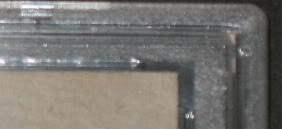
When placed under a halogen light the cardboard will take on a
slightly different appearance and small things such as dents, dings,
toning, wrinkles, paper loss and recolored areas will reveal
themselves. In this case, the halogen light and the angle of the card
showed the added stock. This is magnified several times for effect.
Although it loks obvious from the picture, believe it or not in person
it is still very difficult to see. What looks to be a large lump is
actually just a shadow effect.
[img]https://2img.net/h/i151.photobucket.com/albums/s139/only_child/rebuilt_angle_closeup.jpg">

Rebuilt corners and added stock need to be applied with an
adhesive. In most cases a starch based glue is made and is the
preferred method for joining paper. Under a black light these starches
instantly illuminate revealing the altered areas. When inspecting cards
it's always a good idea to run them quickly under a black light...but a
halogen and loupe are the most important inspection tools you can own.

I might also add that this very same card had a corner pressed to
smooth out a bend. Since somehow this has now been deemed acceptable by
(insert a hobby power-house name here) it was not mentioned.
Typically this is very easy to identify because the corner in
question will be either pinched together or be tapered flat on one side
or the other. For obvious reasons this usually is seen on corners with
a very faint bend/ding line. It is not uncommon by any means and can,
at times, be linked (in one way or another) to some of the larger
auction houses.
side note: Trimmed cards often have corner pinch points as well.
Pressed corners look much different than a card that has been trimmed,
since pressing does not affect the natual tone.
Just something quick to add. Here are a couple cards that have been
prepped to have a corner rebuilt. Each are in the incipient stage:
This card has had a perfect corner added and joined, it is just
waiting to have the joint line filled...then some more doctoring to
finish the job. When completed the end will look normal but the filled
line will show as being altered...but it will be difficult to tell if
done well.
Another way to rebuild a corner is to notch and bevel a corner and
completely rebuilt that corner with matching new stock...plus some more
very advanced doctoring steps. A halogen light and black light will
show the adhesive mixture added to the raw stock mixture.
Kevin Saucier
This is a good example of why every collector should have at least
a halogen light, a 10X loupe as well as a black light as part of their
collection. It also should be a good reason for PSA (and others?) to
stop admittedly just eyeballing cards and actually use instruments for
alteration detection.
Many have heard of rebuilt corners and added stock but few
collectors have ever actually seen one....or at least a high-end
example. The problem is that a quality rebuilt corner is very
difficult, at best, to detect. As you can see here, this one got past
the graders.
Here is how the card looks under normal conditions and ambient
light. There seems to be no problems and it appears to be graded
accurately. You cannot see the alteration.


When placed under a halogen light the cardboard will take on a
slightly different appearance and small things such as dents, dings,
toning, wrinkles, paper loss and recolored areas will reveal
themselves. In this case, the halogen light and the angle of the card
showed the added stock. This is magnified several times for effect.
Although it loks obvious from the picture, believe it or not in person
it is still very difficult to see. What looks to be a large lump is
actually just a shadow effect.
[img]https://2img.net/h/i151.photobucket.com/albums/s139/only_child/rebuilt_angle_closeup.jpg">

Rebuilt corners and added stock need to be applied with an
adhesive. In most cases a starch based glue is made and is the
preferred method for joining paper. Under a black light these starches
instantly illuminate revealing the altered areas. When inspecting cards
it's always a good idea to run them quickly under a black light...but a
halogen and loupe are the most important inspection tools you can own.


I might also add that this very same card had a corner pressed to
smooth out a bend. Since somehow this has now been deemed acceptable by
(insert a hobby power-house name here) it was not mentioned.
Typically this is very easy to identify because the corner in
question will be either pinched together or be tapered flat on one side
or the other. For obvious reasons this usually is seen on corners with
a very faint bend/ding line. It is not uncommon by any means and can,
at times, be linked (in one way or another) to some of the larger
auction houses.
side note: Trimmed cards often have corner pinch points as well.
Pressed corners look much different than a card that has been trimmed,
since pressing does not affect the natual tone.
Just something quick to add. Here are a couple cards that have been
prepped to have a corner rebuilt. Each are in the incipient stage:
This card has had a perfect corner added and joined, it is just
waiting to have the joint line filled...then some more doctoring to
finish the job. When completed the end will look normal but the filled
line will show as being altered...but it will be difficult to tell if
done well.

Another way to rebuild a corner is to notch and bevel a corner and
completely rebuilt that corner with matching new stock...plus some more
very advanced doctoring steps. A halogen light and black light will
show the adhesive mixture added to the raw stock mixture.

Kevin Saucier
Page 1 of 1
Permissions in this forum:
You cannot reply to topics in this forum
